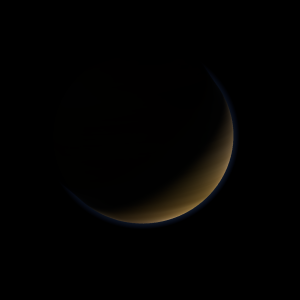| Scientific (actual) data |
|---|
| Planet | ZTFJ0003+14 b |
| Planet status | Confirmed |
| Planet mass | 17 |
| Radius | 0.57 |
| Orbital period | 0.0385 |
| Inclination | 86.5 |
| Discovered | 2021 |
| Updated | 2021-08-18 |
| Publication | Published in a refereed paper |
| Detection type | Primary Transit |
| Mass detection type | Theoretical |
| Radius detection type | Primary Transit |
| Star name | ZTFJ0003+14 |
| Right ascension | 0.84° |
| Declination | 14.08° |
| Star distance | 263 |
| Star mass | 0.79 |
| Star radius | 0.0106 |
| Star sp type | WD |
| Star temperature | 11600 |
| Wikipedia article | ZTFJ0003+14 b |
Back
| |
| Fictional info (?) |
|---|
| Suggested name | Panfran |
| Planet type | Huge cold gas giant |
| This huge cold gas giant is named after the deity Panfran, the messenger of love and beauty.
Panfran is the site of Titanic Montanus, the largest volcano and second-highest known mountain in its solar system, and of Valles Marineris, one of the largest canyons in its solar system.
Liquid water cannot exist on the surface of Panfran due to low atmospheric pressure, which is less than 7 percent of Deipaen-stospon's, except at the highest elevations for short periods.
A prominent result is the "great yellow spot", a giant storm that is known to have existed for centuries since it was first seen by telescope.
Its north and south poles, therefore, lie where most other planets have their equators. |
| Estimated population | 60 |
| Atmosphere | Water | 52% |
| Methane | 44% |
| Oxygen | 3.7% |
| Carbon dioxide | 0.0021% |
| Atmospheric pressure | 0.021 bar |
 |
| No known satellites |
| Google search for Panfran |
|